In a multi-part series, Comic Book Film Editor William Gatevackes will be tracing the history of comic book movies from the earliest days of the film serials to today’s big blockbusters and beyond. Along with the history lesson, Bill will be covering some of the most prominent comic book films over the years and why they were so special. This time, we cover Marvel’s flagship title, FANTASTIC FOUR and the problems its film adaptations have.
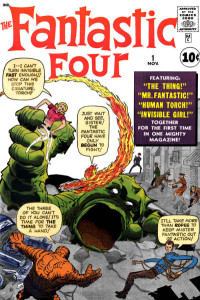 Fantastic Four #1 has to rank right up there with Action Comics #1 as one of the most important individual comic books in the history of the medium. And as with most historical artifacts, the story of its creation have become legend in and of itself.
Fantastic Four #1 has to rank right up there with Action Comics #1 as one of the most important individual comic books in the history of the medium. And as with most historical artifacts, the story of its creation have become legend in and of itself.
The concept was created by Stan Lee and Jack Kirby in 1961, and each man had his own view on how the series came about. Lee said that Atlas (as Marvel was then known) publisher Martin Goodman found out during a golf game with a DC Comics bigwig that that company’s Justice League of America was a huge success. Goodman then ordered Lee, the Editor -in-Chief and head writer at Atlas, to come up with a superhero team to cash in on the trend. Lee has said that he was willing to quit the business, but was compelled by his wife to give Goodman what he wanted, but the way Lee had always wanted to write it. Lee decided to make his new superhero team, the Fantastic Four, completely different than all that had come before.
Kirby, on the other had, offered another version. He said he had returned to Atlas/Marvel Comics after a contentious break-up with rival DC Comics and claimed that he came upon a despondent Lee, who was in charge of a failing Atlas and desperate for a hit to reverse the company’s fortunes. Kirby reassured Lee, then started to work on a concept that bore more than a passing similarity to the Challengers of the Unknown, a concept he created for DC years before. The artist tweaked than concept, made it a family with superpowers, and presented it to Lee as the Fantastic Four.
The truth is most likely somewhere in between, as elements of both man’s styles are in the final product. But what cannot be denied is the affect it had on the world of comics. The superhero comic book was just making a resurgence, but the heroes being presented were staid paragons of perfectness. The biggest challenge Superman had to face in his everyday life was Lois Lane trying to figure out his secret identity for the twenty millionth time. Batman had an endless supply of money in his civilian identity, and the luster and glamor that came with it. The DC characters resembled their reader’s lives as much as a block of wood resembles a house.
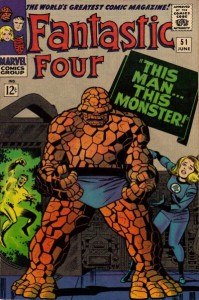 Fantastic Four changed all that. Lee and Kirby gave their characters dramatized version of real world problems their readers might face. Sue loved Reed, but was resentful of the time he spent in the lab. However, Reed would often be overcome with jealous anger when the Sub-Mariner flirted with Sue–and Sue reciprocated. Ben and Johnny would fight like cat and dog, usually after one pulled a prank on the other. The squabbles temporarily took Ben’s mind off being trapped in the body of a monster. And Reed continually felt guilty over being responsible for Ben’s predicament.
Fantastic Four changed all that. Lee and Kirby gave their characters dramatized version of real world problems their readers might face. Sue loved Reed, but was resentful of the time he spent in the lab. However, Reed would often be overcome with jealous anger when the Sub-Mariner flirted with Sue–and Sue reciprocated. Ben and Johnny would fight like cat and dog, usually after one pulled a prank on the other. The squabbles temporarily took Ben’s mind off being trapped in the body of a monster. And Reed continually felt guilty over being responsible for Ben’s predicament.
The team often times had trouble making the rent, or had to deal with angry neighbors. Characters got married, left the team in a huff, had children, and developed friendships with other heroes. In other words, the Fantastic Four had problems, just like the rest of us.
The book ushered in the Marvel age of comics. Without the Fantastic Four, we wouldn’t have had Spider-Man. Or the X-Men. Or Watchmen. Or the Marvel Cinematic Universe. Or perhaps even comic books today at all. Such is the importance of the Fantastic Four.
The team had a number of successful animated adaptations, it took over twenty years for the concept to be optioned for a feature film, another 11 until an attempt at filming was made, and another 11 on top of that before a movie was actually in cineplexes.
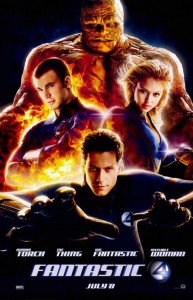 The story of the aborted 1994 Fantastic Four film was the stuff of legend, but we spoke about that one in a previous installment, so we’ll pick up from where that story left off. While the Corman FF film would never officially be seen, it did buy rights holders Constantin Films more time to develop a bigger budget version of the film. However, things weren’t any easier after the rights reprieve, as the film went through a similar development hell. The script, while credited to Mark Frost and Michael France, went through many other hands–most notably Simon Kinberg, before production began. As a matter of fact, actors were still getting script pages while the movie was being filmed.
The story of the aborted 1994 Fantastic Four film was the stuff of legend, but we spoke about that one in a previous installment, so we’ll pick up from where that story left off. While the Corman FF film would never officially be seen, it did buy rights holders Constantin Films more time to develop a bigger budget version of the film. However, things weren’t any easier after the rights reprieve, as the film went through a similar development hell. The script, while credited to Mark Frost and Michael France, went through many other hands–most notably Simon Kinberg, before production began. As a matter of fact, actors were still getting script pages while the movie was being filmed.
And when it came to getting talent on board, the film became virtual hot potato that most of Hollywood passed on. Directorial candidates when from the awesome (Chris Columbus and Steven Soderbergh) to the intriguing (Peyton Reed) to the underwheming (Raja Gosnell) before finally settling on Tim Story, a director who biggest resume listings were the comedies Barbershop and Taxi. Instead of getting George Clooney as Reed Richards, we got the relative unknown Ioan Gruffudd. Instead of getting Rachel McAdams or Scarlett Johansson as Sue Storm, we got the relatively wooden Jessica Alba (although her performance might not entirely been all her fault).
Not that all the missed opportunities were cases of diminishing returns. Paul Walker passed on the role of Johnny Storm, allowing Chris Evans to add it as the first of many comic book characters on his resume. His performance was a high point of the film. And James Gandolfini was offered the role of Ben Grimm, but the capable Michael Chiklis was eventually cast in the role. Chiklis brought a lot of the humor and pathos that made the comic book Thing great into his performance.
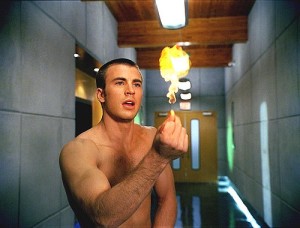 The plot involves Reed Richards desire to study a cosmic ray storm in space for clues it might hold to human evolution. He takes his friend Ben, a pilot, his estranged girlfriend and fellow scientist Sue, her brother Johnny, who is an astronaut, and the financier of the project and former classmate Victor Von Doom up to a space station to run tests. However, a miscalculation exposes them to the cosmic radiation, altering the quintet’s DNA and giving them superpowers. Reed, Sue, Johnny and Ben have to deal with their powers and the attention they generate, while Von Doom tries to gain even more power for himself.
The plot involves Reed Richards desire to study a cosmic ray storm in space for clues it might hold to human evolution. He takes his friend Ben, a pilot, his estranged girlfriend and fellow scientist Sue, her brother Johnny, who is an astronaut, and the financier of the project and former classmate Victor Von Doom up to a space station to run tests. However, a miscalculation exposes them to the cosmic radiation, altering the quintet’s DNA and giving them superpowers. Reed, Sue, Johnny and Ben have to deal with their powers and the attention they generate, while Von Doom tries to gain even more power for himself.
The film is continually lambasted by film critics and comic fans as one of the worst films ever. Personally, I don’t see it. Granted, it will never replace Casablanca as my favorite film of all time, but the film had a lot going for it. I liked the way they updated the origin for the film while still keeping it based in the world of science. I think they pegged the Ben and Johnny dynamic well. And I also like how the climax showed the characters working together as a team to take down the villain, which was a change from the X-Men films, where the team broke off to take down the bad guys on a one-on-one basis.
I even liked the update they did on Doom, a sore spot for many comic fans. I realized that megalomaniac Doom that always bombastically refers to himself in the third person would not translate well to film, and was ready to accept something different. I thought the eurotrash version the film gave us was a unique approach to the character,thought Julian McMahon did well bringing the sliminess this version of the character needed, and thought having Doom get powers in the same accident made him more of a threat to the team.
But bad reviews and fanboy griping did not stop the film from tripling it’s budget in worldwide grosses. That meant a sequel was on the way, and that they would tackle one of the legendary tales from the comic book with Fantastic Four: Rise of the Silver Surfer.
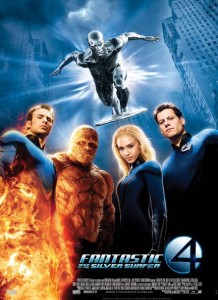 Story and the cast returned as writers Mark Frost and Don Payne set about adapting “The Galactus Trilogy” from Fantastic Four #48-51, with elements of Fantastic Four # 57-60 thrown ion for good measure. The story begins with Reed and Sue contemplating leaving the world of heroics behind, as Sue is feeling neglected by Reed spending all his time in a lab solving the world’s problems. However, their retirement is complicated by the arrival of the Silver Surfer, a surfboard-riding alien who appears to be terraforming the Earth for some nefarious purpose. Turns out the Surfer is preparing the Earth to be devoured by his master, Galactus, a cloud of cosmic energy that sustains itself by destroying planets.
Story and the cast returned as writers Mark Frost and Don Payne set about adapting “The Galactus Trilogy” from Fantastic Four #48-51, with elements of Fantastic Four # 57-60 thrown ion for good measure. The story begins with Reed and Sue contemplating leaving the world of heroics behind, as Sue is feeling neglected by Reed spending all his time in a lab solving the world’s problems. However, their retirement is complicated by the arrival of the Silver Surfer, a surfboard-riding alien who appears to be terraforming the Earth for some nefarious purpose. Turns out the Surfer is preparing the Earth to be devoured by his master, Galactus, a cloud of cosmic energy that sustains itself by destroying planets.
The team’s efforts to fight Galactus are complicated when Doctor Doom returns and steals the Surfer’s powers for his own. The FF are forced to fight a immensely powered Doom, all the while as the doomsday clock ticks down to zero.
There are nods to the comic books aplenty here, but not all of them add to narrative. Yes, Sue being resentful of the amount of time Reed spends in the lab is taken from the comics, but A) in the films she is scientist too, so she can spend time in there with him, and B)the best time to make a stand on the issue isn’t when the Earth is in imminent danger of being destroyed.
And Stan Lee playing Stan Lee being refused entry into Reed and Sue’s wedding was a nice nod to a similar scene from the comic book wedding of the two, where Lee and Kirby were kept out of that wedding. But it seems like everyone forgot that Lee played the team’s mailman, Willie Lumpkin, in the first film. Those not in on the joke were wondering why they were being so mean to their mailman by keeping him away from the nuptials.
Regardless, while the film made less that its predecessor and only $1 million more than its budget domestically, it doubled its budget in worldwide grosses. Talk began of having a Silver Surfer spin off from a script written by J. Michael Straczynski, but it quickly became apparent that no sequels or spin-offs would be coming any time soon.
But Fox still had faith in the Fantastic Four, so much so that they were supposedly willing to let their rights to Daredevil revert to Marvel than letting Marvel have even temporary access to any part of the FF mythos. So instead of a sequel, we got a reboot, a reboot which is picking up steam even as we speak. That’s what we’ll talk about next time, as we look at the FF’s future, and how it might not be as bright as Fox thinks it is.




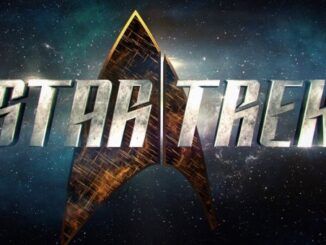
HISTORY OF THE COMIC BOOK FILM: The Not-So-Fantastic-Voyage http://t.co/VyjR5hCQWz